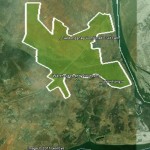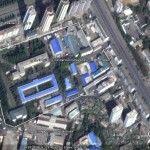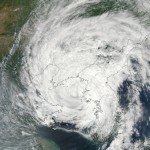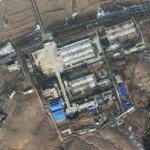By Michael Rank
During his visit to London earlier this year, President Obama declared, “We believe not simply in the right of nations, but the rights of citizens.” In North Korea, it is the opposite, with citizens having next to no rights that they are able to defend, and the state supreme in its defence of its own rights. Indeed, in North Korea human rights are so limited that it may come as something of a surprise that the government recognises the concept at all, but it does and is prepared to defend its view of them and the way citizens are supposedly protected from exploitation and degradation. Yet knowledge about the North Korean legal system is so hazy that a number of ambassadors in Pyongyang spent much time and effort in the 1970s puzzling out whether the country had any law courts at all, and never came to a definitive conclusion (North Korea Under Communism, by Erik Cornell, 2002).
Almost 40 years later, it is probably true to say no westerner has ever witnessed a trial in North Korea, and North Korean legal theory likewise remains terra incognita, so this book performs a valuable service in putting ideas of human rights in the DPRK in their historical and social context. This includes assessing the influence of Chinese Confucianism and traditional Korean social thinking as well as putting them in a Marxist and post-colonial perspective. “No [previous] attempt has been made to understand and interpret the official discourse of human rights in the DPRK, and I fill in this gap,” the author states in her introduction. The book is based on the author’s doctoral thesis from Cambridge University and relies heavily on Korean-language material, much of it available in digital form, thanks to the engagement policy between the two Koreas after the 2000 Pyongyang summit. That policy has of course since collapsed.
The author suggests that North Korean human rights discourse is based on “Korea’s deeply embedded traditional Confucian values in harmony and unity, the post-colonial right to self-determination, the Marxist antagonism against egoistic individualism, and various collective components of Juche Ideology by Kim Il Sung and ‘our style’ human rights by Kim Jong Il have all constituted collective ideas of human rights in the DPRK.” But Song stresses how human rights discourse in North Korea is by no means static, and criticises some conservative pressure groups, and the current government in Seoul, for “often dismiss[ing] the meaningful signs and important changes that have taken place inside North Korea”. She adds that “It is my belief that the growing number of market-oriented economic activities, and the creation of civil society, although relatively limited in comparison to external standards, can help form a civil society, resistant to the autocratic regime in North Korea.” At the same time, she questions whether western pressure groups are “ready to adopt a culturally sensitive approach approach in order to understand the influences of history, politics, and indigenous cultural traditions on the formation of human rights ideas in North Korea.”
In her discussion of the influence of Confucianism, she suggests that this traditionally incorporated a system of checks and balances but she finds that this no longer obtains in North Korea, and notes that despite the rise of the concept of “virtuous politics” under Kim Jong Il, the country was unable to provide that most basic of human needs, food, in the 1990s when famine stalked the land.
In any case, despite North Korea’s deep debt to Confucianism, it affects to despise this ancient philosophy. According to an official encyclopaedia, “Like other religions, Confucianism was also a heresy, somewhat like opium. Confucianism was used as an ideological tool of the feudal ruling class since it arrived in Korea and had a poisonous impact on the People’s ideology, psychology and ethics as well on economic culture and technological development.”
One of the main factors in North Korean thinking on human rights in the early years of the DPRK was the bitter memory of the Japanese colonial past and the need for nation-building, as well as identifying and suppressing the enemy within. “Distinguishing ‘People’ who are eligible for proper human rights from enemies who are not has been a constant ideational construction process in the DPRK since 1945, depending on changing domestic and international environments,” Song notes. The death of Stalin encouraged critics of Kim Il Sung to stress “the protection of human rights”, which resulted in a backlash, with Kim arguing that his critics were acting “to protect the interests of landlords and capitalists” while the 1956 Hungarian uprising had spread “bourgeois” ideas of human rights into North Korea.
This was the period when Kim was developing his Juche theory, which the author notes replaced Marxism-Leninism as the country’s guiding ideology in the 1992 constitution. For Song, the theory of rights in Juche is closer to Korean Confucianism and to the 19th century Sirhak and Tonghak movements than it is to Marxism, and she also notes how the positive right to subsistence embodied in Juche has been employed negatively to criticise capitalist countries and the poor material conditions of marginalised people in the U.S. and Japan.
Juche has in recent years been complemented by Kim Jong Il’s “‘our style’ of human rights” (urisik in’gweon), which the author, perhaps surprisingly, says “has shown some pragmatic approaches towards international society and left the door open for new departures in this area”. The main characteristics of “our style” human rights “are citizens’ duties and loyalty to the party and the leader in return for the protection of basic subsistence rights and security, and the conception that rights are granted, not entitled inherently when a person is born.” “Not surprisingly,” Song adds, “all [principles] represent the antithesis of individual and liberal concepts of human rights.”
Some North Korean theorists have some understanding at least of the evolution of human rights in the west, including Magna Carta and the French declaration of human rights, both of which serve the material interests of the “property-driven manipulative bourgeoisie”, and there is even some awareness of contemporary thinkers like Ronald Dworkin and Robert Nozick, who are said to represent the imperialists by emphasising a right to property and abstract norms such as freedom and equity. But “In practice,” Song says, “the ideological education of the DPRK focuses on the growing gap between the rich and the poor and human rights violations in Western countries.”
Song occasionally digresses gently away from human rights, and she has some interesting insights into the religious dimensions to the Juche philosophy and into the personality cult, noting that “Unlike the Stalinist cult, the personality cult of Kim Il Sung and Kim Jong Il clearly belongs to the realm of supernatural shamanistic phenomena.”
This book is absurdly expensive, and it is also dully designed. It includes some unremarkable black and white photographs and reproductions of North Korean propaganda posters that don’t have any great relevance, although I did like the one of a pilot playing an electric guitar, with the slogan, “I’ll show the People’s rock ‘n’ roll to imperialist bastards.”
If I were a prisoner in a North Korean prison camp reading this book (highly unlikely, admittedly) I would probably feel frustrated by its focus on theory rather than on the country’s gruesome practice, but that isn’t really the point. There have been a good number of reports on North Korean human rights practice in recent years, but this is the first study of the thinking behind the practice, and it is so thoughtful and well informed that I can recommend it to anyone with a serious interest in North Korea.
________________
Human Rights Discourse in North Korea: Post-colonial, Marxist and Confucian Perspectives, Song, Ji-young, Routlege, 9 December, 2010.
ISBN: 978 0 415 59394 6
Order at Amazon here.




